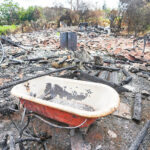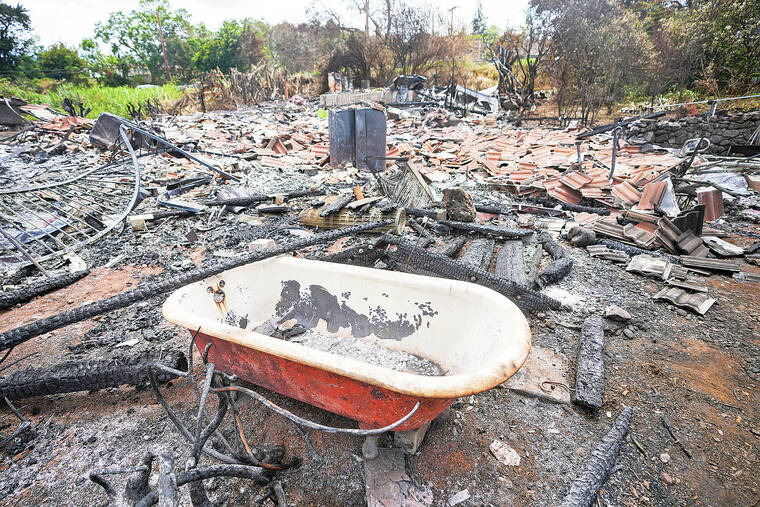Maui Fire Department report on deadly wildfire details need for more equipment and mutual aid plans


HONOLULU — When wildfires broke out across Maui last August, some firefighters carried victims piggyback over downed power lines to safety and sheltered survivors inside their engines. Another drove a moped into a burning neighborhood again and again, whisking people away from danger one at a time.
But despite devoting nearly all the personnel and vehicles it had to the fight on Aug. 8, 2023, the Maui Fire Department was no match for an unprecedented series of blazes including one that killed 101 people in the historic town of Lahaina, according to an after-action report released Tuesday.
ADVERTISING
Maui Fire Department workers “risked their lives in a valiant effort to stop the spread of the fires and save lives,” the report by the Western Fire Chiefs Association said, and are now “grappling with questions about what they could have done differently, a reflection that will likely persist throughout the rest of their careers.”
It was the first of two major assessments of the deadliest U.S. wildfire in a century coming out this week. The Hawaii Attorney General is expected to release the first phase of a comprehensive report Wednesday that will include a timeline of the 72 hours before, during and after the fire.
The department’s report describes the difficulties and harrowing conditions faced by firefighters returning to the reignited Lahaina fire, including many resources being deployed elsewhere, structures quickly catching ablaze amid extreme winds and downed electricity lines making it hard to move resources.
It identifies 17 specific challenges faced by the department — including poorly stocked fire engines, a lack of mutual aid agreements between Hawaii counties and limited equipment — and makes 111 recommendations aimed at preventing similar disasters in the future.
“The worst-case scenario happened, the fire hydrants began to lose water supply,” the authors wrote. “It is unknown if the sheer number of burning homes caused the water connections to fail or if the water supply tanks were not filled due to the early morning loss of electricity.”
The report describes a truck getting caught between downed lines and the fast-approaching flames. One crew member was able to leave in a smaller vehicle and bring back police officers to evacuate the crew. They huddled to one side of the truck, one of them unconscious from a medical emergency, to avoid the extreme heat before they were rescued.
All of that happened before 4:30 p.m., according to the report.
“There were firefighters fighting the fires in Lahaina as they well knew their homes were burning down,” Fire Chief Brad Ventura said during a news conference in Kula on Tuesday. “There were firefighters who rescued people and kept them in their apparatus for several hours as they continued to evacuate others.”
Ventura said he was “incredibly proud” of the response but believes the department can always improve.
One recommendation is that the department keep all back-up vehicles ready to go. Extra engines that were on standby for large incidents took up to an hour to deploy, according to the report, because they needed to be stocked with the proper equipment. The report did not say what they were missing.
The report also describes the chaos after the fire raged out of control. Around 6 p.m., it says, fire trucks drove over downed power lines carrying evacuees to safety. One crew came across a couple who had found a baby, and another pulled people from the water near the sea wall after they jumped into the ocean to avoid the flames.
The report says a repeater enabled radio communications to stay up despite cell towers and fiber-optic cable damage taking down the cellular network, but they were overwhelmed due to “a variety” of unspecified reasons.
Other recommendations include creating a statewide mutual aid program and an evacuation plan for residents and tourists who speak different languages.






